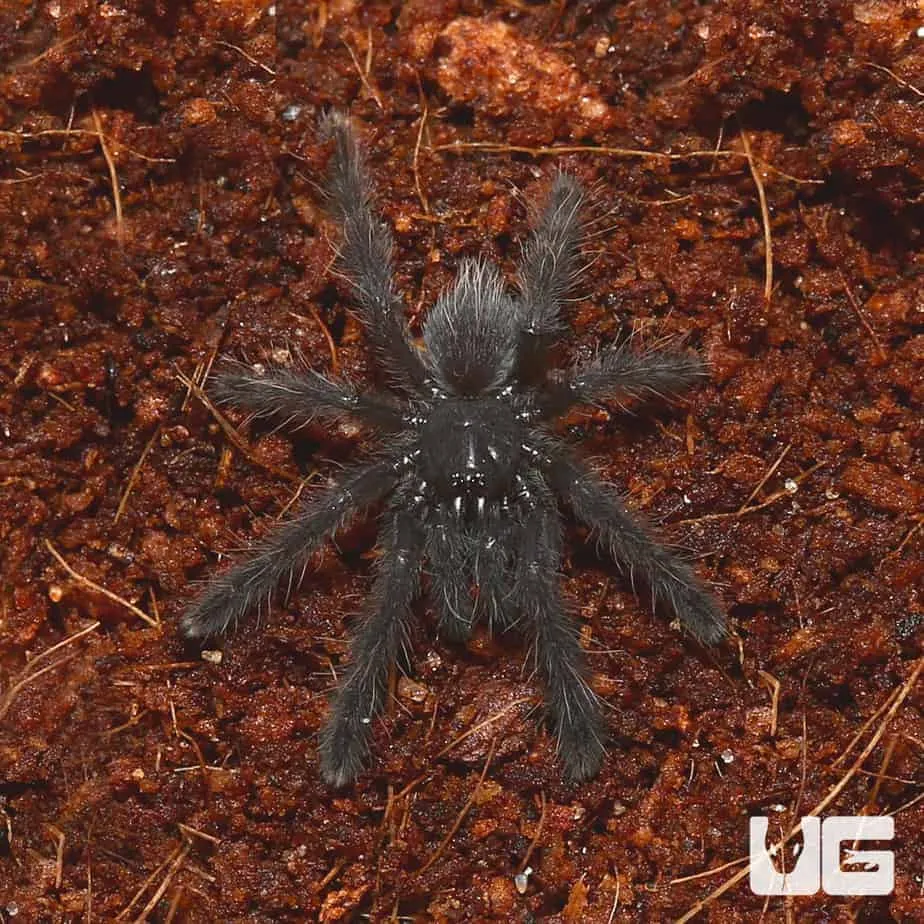What is a Java Earth Tiger Tarantula
The Java Earth Tiger Tarantula, scientifically known as Cyriopagopus vonstriatus, is a captivating and sought-after species in the tarantula-keeping hobby. Native to the island of Java in Indonesia, these spiders are known for their striking appearance and relatively manageable care requirements. They are terrestrial tarantulas, meaning they primarily live on the ground or in burrows. Their impressive size, combined with their unique coloration, makes them a popular choice for both experienced and novice tarantula enthusiasts. Learning about this fascinating creature involves understanding its habitat, behavior, and the specific needs of this beautiful species.
Appearance and Characteristics
The Java Earth Tiger Tarantula is renowned for its striking appearance, which contributes significantly to its appeal among tarantula keepers. They possess a robust build, typical of terrestrial tarantulas. Their coloration is a key feature, with the ’tiger’ in their name referring to the striped pattern often seen on their legs and carapace. This intricate design provides excellent camouflage in their natural environment and is a visual highlight for those who keep them in captivity.
Size and Coloration

Adult Java Earth Tiger Tarantulas can reach a considerable size, with a leg span that can extend up to 6-7 inches. Females are typically larger than males. The base coloration of their body is often a deep brown or black, providing a contrasting background for their lighter markings. Their legs display alternating stripes of tan or cream and darker brown or black, creating the tiger-like pattern that gives them their common name. This coloration varies slightly between individual tarantulas and contributes to their unique appeal.
Distinctive Markings
Besides the striped legs, Java Earth Tiger Tarantulas exhibit other distinctive markings. Their carapace, the upper shell of the cephalothorax, may display patterns of lighter coloration, sometimes appearing as a starburst or intricate design. These markings, combined with the overall color scheme, give each tarantula a unique visual fingerprint. The abdomen of the tarantula is often covered in urticating hairs, which they can flick off as a defense mechanism. These hairs are a key characteristic for identification and a crucial aspect for keepers to consider when handling or interacting with these tarantulas.
Habitat and Distribution
Understanding the natural habitat of the Java Earth Tiger Tarantula is crucial for providing appropriate care in captivity. These spiders are endemic to the island of Java, a volcanic island in Indonesia known for its diverse ecosystems. Their natural environment influences their behavior, preferences, and the specific needs they have to thrive. Replicating aspects of their native habitat in captivity is essential for their well-being and longevity. Understanding the geographic distribution helps clarify their conservation status and provides insights into potential threats to their wild populations.
Natural Environment

In their natural habitat, Java Earth Tiger Tarantulas inhabit tropical rainforests and areas with high humidity. They are terrestrial spiders, meaning they spend most of their time on the ground. They are often found in burrows or under rocks and logs, where they can hide from predators and ambush prey. The forest floor provides them with a moist, humid environment, which is essential for their survival. The availability of food and suitable hiding places is also a critical factor in their habitat selection. They are well-adapted to the environmental conditions found in the rainforests of Java.
Geographic Range
The geographic range of the Java Earth Tiger Tarantula is limited to the island of Java in Indonesia. This makes them a relatively localized species, which can make them vulnerable to habitat loss and other environmental changes. Their distribution is primarily focused on areas within the island that offer suitable habitats, such as rainforests with high humidity and ample ground cover. This restricted distribution highlights the importance of conservation efforts to protect their natural environment and ensure the long-term survival of this species.
Behavior and Temperament
The behavior and temperament of the Java Earth Tiger Tarantula are key considerations for both potential keepers and those interested in learning more about this species. While tarantulas are generally solitary creatures, their specific behaviors and defensive mechanisms vary. Understanding their activity levels, defensive postures, and how they interact with their environment is vital for providing proper care and handling. These insights help keepers create a safe and enriching environment that caters to the spider’s natural tendencies.
Defensive Mechanisms

Like all tarantulas, the Java Earth Tiger Tarantula has several defensive mechanisms. One of the most common is the flicking of urticating hairs from their abdomen. These hairs are irritating to skin and can cause discomfort if they come into contact. They may also adopt a defensive posture, raising their front legs and displaying their fangs if they feel threatened. In more extreme cases, they may attempt to bite. The best approach is to handle the tarantula with care and respect, recognizing these defense mechanisms and acting accordingly.
Activity Levels
Java Earth Tiger Tarantulas are generally considered to be a relatively active species, particularly in the evenings and at night. They often display interesting behaviors, such as exploring their enclosure and waiting in ambush for prey. Their activity levels can be influenced by factors such as temperature, humidity, and the presence of food. Keepers often observe them moving around their enclosures, making them an engaging species to observe.
Diet and Feeding Habits
The diet and feeding habits of the Java Earth Tiger Tarantula are relatively straightforward, aligning with the general feeding patterns of most tarantulas. Understanding their preferred prey and feeding frequency is crucial for maintaining their health and well-being in captivity. A balanced diet that meets their nutritional needs will contribute to their growth, longevity, and overall health. The proper feeding routine will also help to minimize stress and promote a natural behavior.
Preferred Prey

In the wild, the Java Earth Tiger Tarantula primarily feeds on insects, such as crickets, beetles, and other invertebrates. In captivity, keepers typically feed them a variety of insects, including crickets, dubia roaches, and mealworms. The size of the prey should be appropriate for the size of the tarantula, with smaller spiders requiring smaller insects. Variety in their diet can help ensure they receive the necessary nutrients for optimal health. Providing a varied diet mimics their natural feeding habits and contributes to the spider’s overall health.
Feeding Frequency
The feeding frequency for Java Earth Tiger Tarantulas varies depending on their age and size. Spiderlings typically need to be fed more frequently, about two to three times per week. As they grow, the feeding frequency can be reduced to once or twice a week for juveniles and once every one to two weeks for adults. Overfeeding can lead to health problems, so it is essential to monitor their abdomen size and adjust the feeding schedule accordingly. Always remove uneaten prey within 24 hours to prevent any potential health hazards or stress for the tarantula.
Care and Maintenance
Providing proper care and maintenance is essential for the health and well-being of your Java Earth Tiger Tarantula. This includes establishing the right enclosure, maintaining appropriate humidity and temperature, and providing a safe and stimulating environment. Careful attention to these factors will contribute to the spider’s longevity and allow you to enjoy observing this amazing creature. The following sections outline the key aspects of their care, focusing on enclosure requirements, humidity, and temperature.
Enclosure Requirements

The enclosure for a Java Earth Tiger Tarantula should be appropriately sized to accommodate their size and terrestrial lifestyle. A ten-gallon tank is suitable for spiderlings and juveniles, while adult tarantulas may require a larger enclosure, such as a 20-gallon long tank. The enclosure should be escape-proof, with a secure lid to prevent the tarantula from escaping. Substrate, such as a mixture of peat moss, coconut fiber, and vermiculite, should be provided to a depth of 4-6 inches, allowing the tarantula to burrow. Hides, such as cork bark or artificial hides, should also be provided to offer the tarantula a place to retreat and feel secure.
Humidity and Temperature
Maintaining the correct humidity and temperature levels is critical to the health of a Java Earth Tiger Tarantula. These tarantulas thrive in a humid environment, with humidity levels of 65-75% ideal. Regular misting of the enclosure with dechlorinated water can help to maintain the required humidity levels. The temperature should be maintained between 75-85°F (24-29°C). A heat source, such as a heat mat or a low-wattage heat lamp, can be used to maintain the appropriate temperature, but it is important to ensure that the heat source does not overheat the enclosure and that the tarantula has a temperature gradient to regulate its body temperature.
Lifespan and Conservation
Understanding the lifespan and conservation status of the Java Earth Tiger Tarantula provides insights into the long-term care considerations and the broader impact of habitat changes and environmental conditions. The average lifespan of a tarantula and its conservation status are vital pieces of information for both keepers and conservationists. These factors highlight the importance of responsible pet ownership and proactive conservation efforts to protect these incredible arachnids.
Average Lifespan

The average lifespan of a Java Earth Tiger Tarantula varies depending on the sex of the spider. Females generally live significantly longer than males. Female Java Earth Tiger Tarantulas can live for 10-15 years or even longer under optimal care. Males, on the other hand, tend to have a shorter lifespan, typically living for 3-5 years after reaching maturity. Providing the best possible care, including a proper diet, suitable habitat, and environmental conditions, is critical to maximizing a tarantula’s lifespan.
Conservation Status
The conservation status of the Java Earth Tiger Tarantula is not currently listed as endangered, but it’s essential to recognize that this species is endemic to a limited area and is thus vulnerable to habitat loss and the impact of the pet trade. Habitat destruction due to deforestation and agricultural expansion poses the greatest threat to their wild populations. Responsible pet ownership, including acquiring tarantulas from reputable breeders and providing proper care, can help to mitigate the impact of the pet trade. Further research and monitoring of wild populations are needed to ensure the long-term survival of this captivating species.
